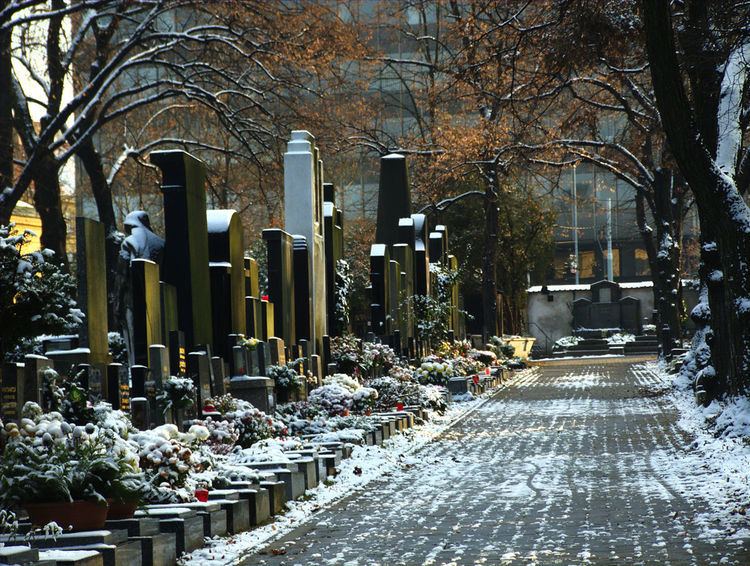Established 1680 Style art nouveau Founded 1680 | Type Public No. of graves 65,000 Phone +420 267 310 652 | |
 | ||
Address Vinohradská 1835/153, 130 00 Praha 3, Czechia Similar Olšanské hřbitovy, Vinohrad hřbitov, Olšanské náměstí, Obřadní síň, Mezi Hřbitovy | ||
Olšany Cemeteries (Olšanské hřbitovy in Czech, Wolschan in German) is the largest graveyard in Prague, Czech Republic, once having as many as two million burials. The graveyard is particularly noted for its many remarkable art nouveau monuments.
Contents
History
The Olšany Cemeteries were created in 1680 to accommodate plague victims who died en masse in Prague and needed to be buried quickly. In 1787, when the plague again struck the city, Emperor Joseph II banned the burial of bodies within Prague city limits and Olšany Cemeteries were declared the central graveyard for hygiene purposes.
The Olšany necropolis consists of twelve cemeteries, including, i.a., an Orthodox and a tiny Muslim section, the largest Jewish cemetery in the Czech Republic and military burial grounds. Among the thousands of military personnel buried at Olšany, there are Russian soldiers and officers from the Napoleonic Wars, members of the Czechoslovak Legion, Czechoslovak soldiers, officers and pilots who fought at the Eastern and Western Front and in North Africa during the Second World War as well as male and female members of the Soviet and Commonwealth (including British, Canadian, South African, Greek and Turkish Cypriot and Polish) armed forces who died for the freedom of Czechoslovakia in 1944-1945, including POWs. Based on a bilateral agreement, Czech authorities are responsible for the protection of Russian and Soviet military graves at the Czech territory (as the Russian Federation is responsible for protecting Czechoslovak war graves from both World Wars in Russia). The Commonwealth Prague War Cemetery, including 256 graves, was established under the terms of the 1949 War Graves Agreement between the UK and Czechoslovakia and is maintained by the Commonwealth War Graves Commission. [1]
There are two ceremonial halls assigned to bid farewell to the deceased; the newer one is located in a building of the Prague's first crematorium. New to the scene is the "Olšany Cemeteries Learning Trail" which is so far mapping the history of three of the oldest sections, also sketching the life stories of some celebrities buried here. Prague's Olšany cemeteries excel in their picturesque style and tranquil nooks, surpassing even Malostranský cemetery and Slavín, being the biggest necropolis in the Czech Republic.
Till this day there is evidence of 230,000 people buried, 65,000 grave sites, 200 chapel graves and six columbariums in Olšany Cemeteries.
Part of the movie Bad Company was filmed in Olšany Cemeteries.
Famous burials
Many well-known people are buried at Olšany Cemeteries, including:
